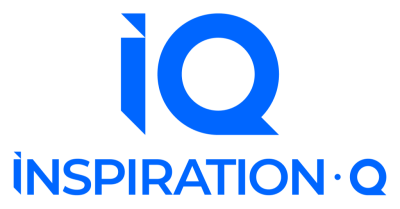Day 1: 14 October
8:00 am - 8:45 am
Registration
8:45 am - 8:50 am
Chairs Opening Remarks
8:50 am - 9:10 am
OPENING ADDRESS: Plenty of Peril - The outlook for the global economy
Mike Bell -
Macro Strategist,
Independent
9:10 am - 9:50 am
PANEL: Sending shockwaves & signals: How can you quantify the Geopolitical market pulse?
Christos Koutsoyannis -
CIO,
Atlas Ridge Capital
Prof. Monica Billio - Professor of Finance and Economics, Ca’ Foscari University
Alisa Rusanoff - Founder/ Advisory Council Member, Stealth Startup / Ankh Impact Ventures
Budha Bhattacharya - Head of Systematic Research, Lombard Odier Investment Manager
Geopolitical shocks don’t wait for market hours—so why should your models? This session dives deep into the high-stakes world of global instability, where central bank pivots, elections, sanctions, and conflict send tremors through asset classes. Discover how today’s most advanced quant strategies are decoding the chaos, translating policy shifts into pricing signals, and safeguarding alpha in an unpredictable macro landscape.
Proposed panel discussion questions:
1. How can quant teams distinguish between noise and signal in real-time geopolitical events?
2. What models or data sets are most effective for capturing policy shocks and forecasting asset class reactions?
3. How can portfolio managers build dynamic hedging strategies that account for regime shifts and geopolitical volatility?
4. Are we nearing a future where LLMs or real-time sentiment analytics replace traditional macro risk modelling?
9:50 am - 10:10 am
PRESENTATION: PMI Data: The Economic Compass for Investors
Chris Williamson -
Chief Business Economist,
S&P Global Market Intelligence
In this session, we explore the how economic data can help investors gain critical economic insights and trading signals. Whether it’s equities, currencies, or fixed income, discover how firms utilize signals in particular from PMI data to inform their investment strategies and navigate the complexities of the economic landscape. The session will emphasize the versatility of PMI as a tool for navigating uncertainty, showcasing various use cases including new AI applications for producing economic signals.
10:10 am - 10:50 am
PANEL: Alpha Warfare: What does winning the AI arms race in Quant Finance look like?
Samuel Livingstone -
Head of Quantitative Strategies and Risk,
Ambienta
Timothee Consigny - CTO, H2O Asset Management
Matthias Uhl - Head Analytics & Quant Solutions, UBS Asset Management
Amadeo Alentorn - Head of Systematic Equities, Jupiter Asset Management
In the relentless pursuit of alpha, speed and sophistication are everything — and AI is the new battleground. This panel brings together leaders at the frontier of quant strategy to unpack how machine learning, advanced data pipelines, and next-gen infrastructure are transforming signal discovery and execution. From deep learning breakthroughs to obscure alternative data feeds, we’ll expose what’s working, what’s hype, and what it really takes to stay ahead in the most competitive race in finance.
Proposed panel discussion questions:
1. How are quant teams engineering proprietary edge in a world where everyone has the same models and compute power?
2. What alternative data sets and AI architectures are actually delivering differentiated alpha — and which are dead ends?
3. How do you balance speed, scale, and complexity when deploying ML models across global markets?
4. Is the future of quant strategy defined by human insight augmented by machines, or will autonomous AI eventually outpace us all?
10:50 am - 11:15 am
QUICKFIRE: Insight unlocked for Quant advantage!
Irina Orlova -
Head of Risk Data Products,
Parameta Solutions
Samuel Fernández Lorenzo - Co-Founder and CEO, Inspiration Q
Machiel Westerdijk - Founder & Managing Director, Entis
Michael Chazot - VP Commercial East USA, Canada & Global FSI, DDN
In a market where milliseconds matter and innovation is the new alpha, this high-octane segment delivers five punchy presentations, each just five minutes long. From cutting-edge datasets to next-gen platforms, algorithmic tooling to AI breakthroughs — discover the tools, tech, and intelligence redefining quantitative strategy. No fluff. Just actionable edge.
Each presenter will showcase how their solution is helping quant teams move faster, think smarter, and stay ahead in an increasingly competitive landscape.
Demo Drive
11:20 am - 11:35 am Compute Without Constraints: Scaling Quant Research in the CloudCome meet the YellowDog team and discover how quantitative research teams can accelerate Monte Carlo simulations and complex model workloads—scaling seamlessly from local environments to thousands of cloud nodes with zero infrastructure friction. Using the popular Ray framework, we’ll show how YellowDog’s intelligent orchestration and autoscaling deliver the speed, precision, and elasticity today’s quants need to achieve high-scale performance without complexity.
Demo Drive led by: Alan Parry, CTO, YellowDog
Booth: B5
Data, AI, and Applied Innovation Stage
11:45 am - 12:30 pm OFF THE RECORD PANEL: Strategizing with AI - Evolution or Revolution? Federico Fontana - Chief Technology Officer, XAI Asset ManagementAditya Sharma - Head of Textual and Quantitative Signals, S&P Global Market Intelligence
Revant Nayar - Principal and CIO, Princeton AI and FMI Tech
Sid Pednekar - Research Analyst, Millennium
- Is AI’s impact a natural extension of existing quantitative methods, or a fundamental disruption? Explore AI’s capabilities through discussions on:
- What recent advancements in AI and machine learning have significantly improved alpha signal extraction, and how are these integrated into systematic strategies?
- How are reinforcement learning, predictive modeling, and execution algorithms driving measurable improvements in portfolio execution efficiency?
- What distinguishes incremental model enhancements from disruptive AI techniques in the context of strategy evolution and market adaptability?
- How are adaptive AI frameworks—such as agent-based models and meta-learning systems—shaping the future of autonomous trading in complex, dynamic environments?
Data, AI, and Applied Innovation Stage
12:30 pm - 12:50 pm PANEL DISCUSSION: Building robust multi-asset portfolios Aous Labbane - Founder, Jasmin Capital and ConsultancyMathias Piardon - CEO, 1L Capital AG
Piotr Podgorny - Director, Quantitative Research, Natixis Investment Managers
James Horrex - Solutions, Schroders
A practical exploration of how leading firms navigate risk and complexity to enhance returns through quantitative investment strategies.
This session should attract quant/fund managers/allocators and large pension funds and insurance firms interested in understanding how major asset managers (FoF allocators) are leveraging quantitative investing within their portfolio strategies.
James Horrex
SolutionsSchroders
Data, AI, and Applied Innovation Stage
12:50 pm - 1:30 pm PANEL: Leveraging AI and Machine Learning for Quant investment Dr. Joo Hee Lee - Consultant, CFA InstituteHamza Bahaji - Head of Financial Engineering & Investment Solutions, Amundi
Andrea Nardon - CIO, Creed & Bear
Leon He - Managing Director, Quantitative Equity, BCI
Machine learning has become increasingly central to both forecasting and portfolio construction. But how do you separate hype from real, actionable value?
- What ML models are most effective for return and risk forecasting?
- How are firms integrating AI and ML signals into quant investment strategies?
- When does ML add value over traditional quant techniques?
Portfolio Optimization and Risk Management Stage
11:45 am - 12:30 pm PANEL: Multi Asset Strategies - Finding a functional risk model for diverse markets Dr. Joo Hee Lee - Consultant, CFA InstituteFlorian Lelpo - Head of Macro and Mult-Asset Portfolio Manager, Lombard Odier Investment Managers
Akhil Khunger - VP Quantitative Analytics, BARCLAYS
Christoph Schon - Head of Investment Decision Research, EMEA, SimCorp
Traditional risk models often fall short in capturing the complex dynamics across multiple asset classes, regions, and liquidity profiles. Gain insights into:
- The development and implementation of functional, adaptable, data-driven risk models
- Cross-asset volatility, as well as fact and correlation modelling.
- Practical challenges in stress testing and scenario analysis.
Panel Questions:
- How can we develop and implement functional, adaptable, data-driven risk models that effectively capture the complexities across multiple asset classes, regions, and liquidity profiles?
- In the context of cross-asset volatility, what are the best practices for factor and correlation modeling to ensure accurate risk assessment and management?
- What are the practical challenges faced in conducting stress testing and scenario analysis, and how can these be addressed to improve risk model robustness?
- Given the dynamic nature of financial markets, how can risk models be designed to adapt to changing conditions and provide reliable insights during periods of market stress?

Florian Lelpo
Head of Macro and Mult-Asset Portfolio ManagerLombard Odier Investment Managers

Portfolio Optimization and Risk Management Stage
12:30 pm - 12:50 pm PRESENTATION: Portfolio optimization and back testing with discrete constraints Robert Luce - Principal Developer, Gurobi OptimizationMathematical portfolio optimization is a tool for maximizing the expected return, minimizing the risk, or optimizing related measures for a portfolio of investments. Quantitative analysts and portfolio managers use portfolio optimization software to support them in making investment decisions. With Gurobi’s MIP technology it is possible to incorporate discrete decisions in the portfolio selection, like fixed costs, transaction limits, and cardinality constraints. The effectiveness of backtesting with discrete constraints is heavily dependent on the solver performance: The more strategies and scenarios can be run, the more alpha. In this session we will share best practices for modeling, implementing and tuning discrete decision models for optimal performance.
Portfolio Optimization and Risk Management Stage
12:50 pm - 1:30 pm OFF THE RECORD FIRESIDE CHAT: Leveraging AI and Machine Learning for Portfolio construction Revant Nayar - Principal and CIO, Princeton AI and FMI TechDara Sosulski - Managing Director, Head of Artificial Intelligence and Model Management, MSS, HS, HSBC
Naman Jain - Senior Portfolio Manager, Millennium Capital Partners LLP
Machine learning has become increasingly central to both forecasting and portfolio construction. But how do you separate hype from real, actionable value?
- What ML models are most effective for return and risk forecasting?
- How are firms integrating AI and ML signals into quant investment strategies?
- When does ML add value over traditional quant techniques?

Dara Sosulski
Managing Director, Head of Artificial Intelligence and Model Management, MSS, HSHSBC
QuantFusion: Mastering the Intersection of Theory & Practice (Masterclass/Workshop)
11:45 am - 1:30 pm Data to Deployment – End-to-End Coding for Quant Analysts Alexander Unterrainer - KDB Enthusiast, DefconQThis hands-on workshop guides quant analysts through the complete workflow of utilizing KDB and q, the high-performance time-series database and programming language widely adopted in financial institutions. Participants will learn the fundamentals of KDB and q for handling real-time market data at scale, build and test end-to-end workflows for analysis, signal generation, and execution, and gain practical experience in writing, optimizing, and deploying production-ready code in a quant environment.
Session Objectives:
- Understand the core concepts and syntax of KDB and q for efficient data handling.
- Develop and test complete workflows for quantitative analysis and trading strategies.
- Acquire practical skills in optimizing and deploying code suitable for production environments in finance.
Session Breakdown (90 Minutes):
1. Introduction to KDB and q (15 minutes)
- Overview of KDB and q: architecture, features, and advantages in financial data processing.
- Discussion on the role of KDB/q in high-frequency trading and real-time analytics.
2. Hands-On Coding: Data Ingestion and Processing (25 minutes)
- Demonstration of ingesting real-time market data into KDB.
- Writing q scripts for data parsing, cleaning, and transformation.
- Best practices for handling large-scale time-series data.
3. Workflow Development: Analysis to Execution (25 minutes)
- Building analytical models and signal generation using q.
- Integrating analysis with execution systems.
- Testing and validating workflows in a simulated environment.
4. Optimization and Deployment (20 minutes)
- Techniques for optimizing q code for performance and scalability.
- Deploying workflows into production environments.
- Monitoring and maintaining deployed applications.
5. Q&A and Discussion (5 minutes)
- Open floor for participant questions
- Discussion on advanced topics and real-world applications.
Key Takeaways:
- Proficiency in using KDB and q for real-time data processing and analysis.
- Ability to develop end-to-end workflows from data ingestion to execution.
- Knowledge of best practices for optimizing and deploying quant applications in production settings.
Hosted Buyers Club
11:45 am - 1:30 pm Hosted Buyers ClubDemo Drive
2:00 pm - 2:15 pm Eliminating the Lakehouse Bottleneck: Constant-Time Access for Quant ResearchQuantitative research teams rely on massive datasets, but file-based lakehouse stacks (Parquet + Iceberg) impose systemic bottlenecks—slow ingest, high-latency queries, and painful schema evolution. VAST DataBase collapses these layers into a unified, flash-native system. In this demo, we’ll show how Sorted Tables, V-Trees, and cell-level updates deliver millisecond queries, 21× faster backfills, and exabyte scale. The result: CPUs and GPUs stay fed, researchers iterate faster, and the data layer becomes a competitive advantage.
Demo Drive led by: Andrius Markvaldas, Senior System Engineer, VAST Data
Booth: C5
Data, AI, and Applied Innovation Stage
2:30 pm - 3:00 pm PRESENTATION: Algorithmic Trading and Execution (with Deep Learning & Time-Series Analytics) Rohit Sharma - Vice President, Market Surveillance, BNY Mellon Investment Management1. Time-Series Modeling of Order Flow Using Deep Learning:
Demonstrate how deep learning models, when applied to high-frequency, structured time-series data in kdb+/q, can enhance short-term price forecasting and execution decision-making.
2. Combining Domain Knowledge with Neural Architectures:
Discuss how deep learning complements traditional signal processing in kdb+/q, addressing interpretability, robustness, and latency trade-offs in real-world execution pipelines.
3. Real-Time Execution Analytics at Scale:
Present techniques for efficient venue benchmarking, slippage monitoring, and dynamic strategy refinement using kdb+/q, aligned with live market microstructure feedback.
These objectives aim to bridge cutting-edge AI applications with time-critical systems built on kdb+/q, offering practical value to quants, engineers, and traders alike.
Data, AI, and Applied Innovation Stage
3:00 pm - 3:40 pm OFF THE RECORD PANEL: Practical Use Cases for Large Language Models & NLP's Samuel Livingstone - Head of Quantitative Strategies and Risk, AmbientaTerri van der Zwan PhD - Quantitative Researcher, Robeco
Guido Baltussen - Head of Quant, Northern Trust Asset Management
Alex Remorov - Director, Systematic Active Equities, BlackRock
Dr Yichuan Zhang - CEO and Chief Research Officer, Boltzbit
Large Language Models and NLP’s have moved from labs to trading desks—shaping the way we trade:
1. Can you give real-world applications of LLMs in quant finance—from sentiment analysis to automated document parsing?
2. How are you using NLP to accelerate research, generate alpha, and improve operational efficiency?
3. How have you grasped the strengths, limitations, and responsible deployment of LLMs in production environments?
Data, AI, and Applied Innovation Stage
3:40 pm - 4:00 pm PRESENTATION: Forecasting the future: Time series modelling in Quantitative Finance Wafaa Schiefler - ED, Commodities Quantitative Researcher, JP Morgan Chase· Time series models are at the core of forecasting in quantitative finance—powering everything from trading signals to risk management strategies:
· Explore key models and deep learning approaches for financial forecasting
· Discover how time series forecasts help you make data-driven decisions on timing, allocation, and risk
Portfolio Optimization and Risk Management Stage
2:30 pm - 3:00 pm PRESENTATION: Real-World Alpha: Use Cases in Applied Quant Modelling, AI & NLP at UBS Matthias Uhl - Head Analytics & Quant Solutions, UBS Asset ManagementGo beyond the theory and deep into the real-world application of quant innovation with Matthias Uhl, Head of Analytics & Quant Modelling (AQM) at UBS Asset Management. This session unpacks practical use cases where AI, machine learning, and NLP are actively being used to extract alpha, generate alternative data insights, and forecast market movements with greater precision.
Drawing from UBS’s institutional experience, Matthias will reveal how cutting-edge quant tools are built, tested, and deployed at scale — and what it means for the future of data-driven investing.
Audience Takeaways:
· Discover real examples of how alternative data and NLP are used to generate tradable signals
· Understand the ML methods and quant analytics driving next-generation forecasting models
· Learn how UBS translates innovative research into practical, scalable investment tools
Portfolio Optimization and Risk Management Stage
3:00 pm - 3:40 pm PRESO: A Deep Dive into “Lenses” — an Algo Performance Framework. Gabriel Tucci - Managing Director, CitigroupAs algo wheels reshape how buy-side firms select brokers, top quality algo performance is no longer a competitive edge—it’s a baseline requirement. Generic factors like bid-ask spread, volatility, top of the book liquidity, order size, etc., are no longer sufficient to navigate today’s intricate market dynamics. This session introduces “Lenses,” a powerful, new framework designed for the dynamic evaluation and enhancement of algorithmic trading performance.
Lenses empower quantitative teams to move beyond traditional metrics, offering unprecedented granularity to "zoom in" on execution quality through tailored, actionable insights. We will provide real-world examples demonstrating how “Lenses” reveal critical opportunities to refine routing logic, determine optimal schedules, or instantaneous participation rates, optimize child order placement and tolerance bands, and intelligently adapt taking strategies in real-time. Discover practical methods for cleaning liquidity, shrewdly managing spread crossing, and effectively mitigating fading effects—all crucial for preserving and maximizing algo performance.
Attendees will learn how to leverage “Lenses” to achieve smarter, better execution quality, and secure a decisive competitive edge in the rapidly evolving landscape of algo wheels.
Overview Objectives:
Optimize Execution Strategy: Empower quant teams to fine-tune execution strategies by leveraging “Lenses” for superior algo performance.
Master Advanced Taking Logic: Implement advanced taking logic, including techniques for cleaning liquidity, intelligent spread crossing management, and effectively mitigating fading effects to safeguard and grow alpha.
Gain Broker Evaluation Advantage: Strategically position your algorithms for success within evolving broker evaluation frameworks, aligning with client-specific benchmarks through adaptive, data-driven performance insights.
Portfolio Optimization and Risk Management Stage
3:40 pm - 4:00 pm PRESENTATION: The future of portfolio construction: Quant innovation for portfolio optimisation using liquid public and illiquid private assets Artur Sepp - Global Head of Investment Services Quant Group, LGT BankAs the lines between public and private markets blur, the demands on portfolio construction models are rapidly evolving. In this keynote, Quant of the Year 2024, Dr. Artur Sepp, Global Head of Investment Services Quant Group at LGT Private Banking, challenges the conventional frameworks that underpin strategic and tactical asset allocation frameworks.
Drawing from pioneering work at the intersection of advanced mathematics and real-world portfolio engineering, Artur reveals how next-generation optimization techniques are enabling fully integrated, cross-asset portfolios—spanning bonds, equities, hedge funds, and private equity. This is not the old-school mean-variance paradigm—it's a reimagining of what quant can achieve in a world where liquidity, transparency, and return dynamics vary dramatically across asset classes.
Key takeaways:
· A first-hand look at the quant frameworks powering multi-asset portfolios across public and private markets.
· Insights into mathematical innovation beyond mean-variance—including clustering and sparse methods for estimation of covariance matrix, tactical signals, and adaptive optimization.
· A roadmap for building future-fit investment architectures that respond to today’s structural shifts in markets and capital allocation.
QuantFusion: Mastering the Intersection of Theory & Practice (Masterclass/ Workshop)
2:30 pm - 4:00 pm Trade smarter – Building Agents with reinforcement learning Nicole Konigstein - Chief AI Officer, Head of AI & Quant Research, quantmateThis hands-on workshop delves into the theory and practical implementation of reinforcement learning (RL) in quantitative finance. Participants will gain insights into building reliable RL models for trading and portfolio management, explore real-world applications, and examine case studies from hedge funds and quant labs.
Session Breakdown (80 Minutes):
1. Introduction to Reinforcement Learning in Finance (10 minutes)
- Overview of RL concepts: agents, environments, states, actions, rewards.
- Differentiating RL from traditional machine learning approaches.
- Relevance of RL in trading, portfolio management, and market making.
2. Building Reliable RL Models for Trading (20 minutes)
- Selecting appropriate RL algorithms (e.g., Q-learning, Deep Q-Networks, Policy Gradients).
- Designing state and action spaces tailored to financial markets.
- Defining reward functions that align with trading objectives.
- Addressing challenges like overfitting, non-stationarity, and exploration-exploitation trade-offs.
3. Real-World Applications (20 minutes)
- Examination of RL implementations in hedge funds and quant labs.
- Strategies for mitigating risks in live trading systems.
- Lessons learned from deploying RL agents in real market conditions.
4. Applications in Asset Allocation, Trade Execution, and Market Making (15 minutes)
- Utilizing RL for dynamic asset allocation strategies.
- Enhancing trade execution through RL-driven decision-making.
- Implementing RL in market-making scenarios to optimize bid-ask spreads and inventory management.
5. Interactive Q&A and Discussion (15 minutes)
Open floor for participant questions.
- Discussion on emerging trends and future directions in RL for finance.
- Sharing resources for further learning and exploration.
Key Takeaways:
- A solid understanding of how reinforcement learning can be applied to various aspects of quantitative finance.
- Practical knowledge of building and deploying RL models for trading and portfolio management.
- Insights into real-world challenges and solutions from industry case studies.
- Awareness of the potential and limitations of RL in live trading environments.
Hosted Buyers Club
2:45 pm - 4:10 pm Hosted Buyers ClubDemo Drive
4:05 pm - 4:20 pm iQ Index Tracking Plus: Beating Indices with quantum-powered algorithmsSamuel Fernández Lorenzo is a quantum physicist and PhD in quantum technologies, CEO and co-founder of Inspiration-Q, a fintech specialized in quantum-inspired computing. He was also an associate professor at IE University. During his career he has worked as a researcher in the financial sector, developing his work on applications of quantum computers and quantum algorithms for finance and artificial intelligence. He has published numerous scientific articles in international journals and is a recognized expert in the application of quantum technologies to the financial sector.
Demo Drive led by: Samuel Fernández, Founder and CEO, Inspiration Q
Booth: A2
Data, AI, and Applied Innovation Stage
4:30 pm - 5:00 pm PRESENTATION: Where Should Your Models Live? Cloud, On-Prem, or Both? Barry Fitzgerald - Co-Head of Front-office Engineering, Man GroupWhere and how models are deployed can impact everything from execution speed to compliance.
In this session:
- Compare performance, scalability, and latency trade-offs between cloud and on-prem deployments
- How do the costs compare? How can you avoid lock-in?
- Does the increased use of Gen-AI/GPUs/XPUs change things?
- Understand regulatory, data security, and compliance considerations
- Can hybrid architectures give a best of both world’s solution for balancing costs, speed, control, and flexibility
Data, AI, and Applied Innovation Stage
5:00 pm - 5:40 pm PANEL: Alpha in the Age of Alternative Data — Building Robust Quant Models That Deliver Kristina Ūsaitė - Senior Quantitative Researcher, RobecoGiuliano De-Rossi - Head Quants Equities in the Chief Investment Office, UBS Global Wealth Management
Erdem Ultanir - Credit Risk Manager, Barclays
Maarten Smit - Quantitative Active Portfolio Analyst, Senior Vice President, Northern Trust Asset Management
Quant teams are under pressure to extract alpha from increasingly complex and unconventional datasets. As new signals, factors, and sources emerge, how do you build models that are not only predictive—but resilient and scalable?
· How do we quantify data quality?
· What are the impacts of data quality on quantitative models, e.g. can models work with dirty or missing data?
· Learn how to integrate new data sources into model pipelines without compromising stability
· Understand the evolving role of alternative data in sustainable alpha generation
· Assessing signal trading and landing models, assessing processes and cleaning dirty data
· What are the different use cases of data and data quality requests from various stakeholders, including business, validation, risk, and regulators?

Giuliano De-Rossi
Head Quants Equities in the Chief Investment OfficeUBS Global Wealth Management


Maarten Smit
Quantitative Active Portfolio Analyst, Senior Vice PresidentNorthern Trust Asset Management
Portfolio Optimization and Risk Management Stage
4:30 pm - 5:00 pm OFF THE RECORD PANEL: Building the Quantitative foundations of modern portfolio construction Carlos Arcila-Barrera - Portfolio Manager and Research Lead, Sigma Advanced Capital ManagementGiulio Renzi-Ricci - Head of asset allocation, Vanguard
Alexis Yannakou - Quant Strategist, Citadel
Samuel Livingstone - Head of Quantitative Strategies and Risk, Ambienta
· What are the most impactful advancements in multi-factor risk modelling, and how are they reshaping portfolio construction in high-volatility environments?
· In what ways are AI, machine learning and quantum computing techniques enhancing or challenging traditional portfolio construction?
· How can quants effectively integrate signal uncertainty and regime shifts into dynamic risk models and portfolio rebalancing strategies?
Portfolio Optimization and Risk Management Stage
5:00 pm - 5:40 pm PANEL DISCUSSION: Systematic strategies in Digital Assets: Navigating volatility, liquidity, and opportunity Ankush Jain - Advisory, Jain HoldingsSamed Bouaynaya - Portfolio Manager, Altana Wealth
Jean-Marc Bonnefous - Managing partner, Tellurian Capital
Alessandro Balata - Portfolio Manager, Fasanara Digital
Evgeny Byvatov - Head of Systemic Volatility Trading, GSR
As digital assets mature beyond the hype cycle, a growing number of institutional investors are exploring systematic strategies to manage volatility and capture alpha in an inherently fragmented, fast-moving market.
Panel Questions:
1. Can you elaborate on how you are developing the end-to-end architecture of a long/short quant crypto strategy—using fundamental and systematic analysis and CTA models and trading them systematically with quant models?
2. In the context of a multi-strategy, institutional-grade digital asset fund that blends internal systematic strategies with external manager allocations, how do you approach portfolio construction and dynamic capital allocation across a diverse set of models and trading styles?
3. What frameworks or technologies enable you to optimize risk-adjusted returns while managing cross-strategy correlation in a volatile and fragmented market?
QuantFusion: Mastering the Intersection of Theory & Practice (Masterclass/ Workshop)
4:30 pm - 5:40 pm LLM's, Latent Signals, and the Future of Unstructured Alpha Dr Yichuan Zhang - CEO and Chief Research Officer, BoltzbitAs foundation models like GPT, Claude, and Gemini enter finance, the next quant frontier is extracting latent signals from massive unstructured datasets. This masterclass explores how LLMs can be fine-tuned and interrogated to extract market-moving insights from earnings calls, filings, news flow, and more. Participants will prototype alpha pipelines using LLM outputs and debate their interpretability, drift, and compliance viability.
Structure:
Part 1: Applied LLM Briefing
Walkthrough of practical use cases: fine-tuned models for sentiment extraction, risk signal detection, and meta-feature creation
Part 2: Group Alpha Sprint
Teams receive an unstructured dataset (e.g., snippets from 10-Ks, call transcripts, macro headlines) and a mission: generate 1–2 usable features or signals using a foundation model output (pre-provided or simulated)
Part 3: Debate Round
Teams justify their signal’s validity, interpretability, and potential drift exposure; the group votes on robustness
Part 4: Expert Close
Discussion on prompt engineering, retraining pipelines, and alpha lifecycle for LLM signals
Takeaways:
- Practical LLM integration in quant workflows
- Feature engineering from unstructured sources
- Risk assessment of opaque models in a high-compliance context
Hosted Buyers Club
4:40 pm - 6:00 pm Hosted Buyers Club
5:40 pm - 6:00 pm
OUT OF INDUSTRY KEYNOTE ADDRESS: From Pit Wall to Portfolio: Lessons in high-performance data strategy from Formula 1
Neil Martin -
Former Formula 1 Strategist & Former Head of Strategy/Operations,
Ferrari, Red Bull Racing & McLaren Racing
What can quantitative strategists learn from the world's most data-driven sport? In this keynote, Neil Martin, pioneer of data analytics in Formula 1 and founder of Paceteq, brings over 25 years of experience at Ferrari, Red Bull, and McLaren to the world of finance. From split-second race decisions to long-term strategic planning, Neil draws powerful parallels between the precision of motorsport and the high-stakes environment of quantitative investing. This session will unpack how to harness data analytics, digitalisation, and risk modelling to drive better decision-making under pressure — and build winning strategies in the face of uncertainty.
Key Takeaways:
- Precision under pressure: How F1 teams manage uncertainty and high-speed data to make critical decisions — and what quant teams can learn from their approach.
- Risk modelling in motion: Applying Monte Carlo simulation, game theory, and probabilistic thinking to optimize race strategy — and how similar frameworks can apply to trading and portfolio management.
- Digitalisation as a competitive edge: Lessons in building smart, adaptive systems through AI and automation to unlock performance.
- Data-driven culture: How to instil a high-performance mindset across technical teams and foster collaboration between engineering, strategy, and operations.
- Cross-industry innovation: Why today’s most forward-thinking firms are looking outside finance for their next strategic advantage — and how motorsport continues to lead in real-time analytics.

Neil Martin
Former Formula 1 Strategist & Former Head of Strategy/OperationsFerrari, Red Bull Racing & McLaren Racing






























































































